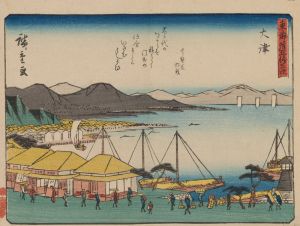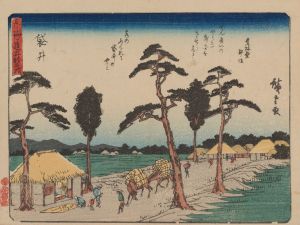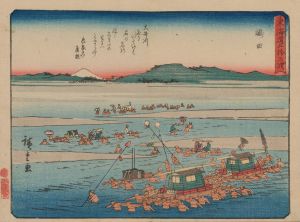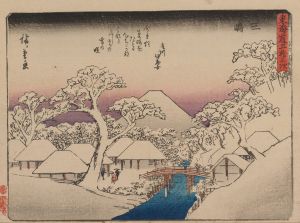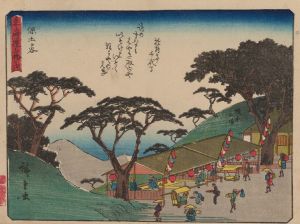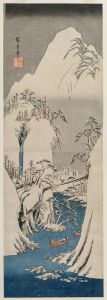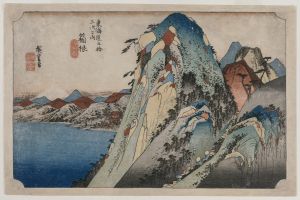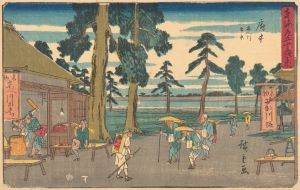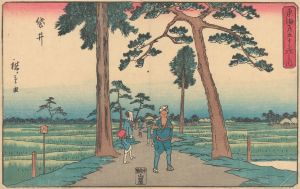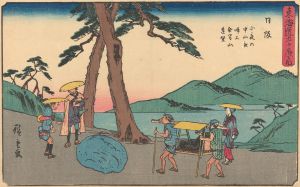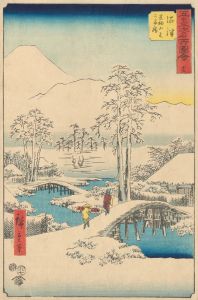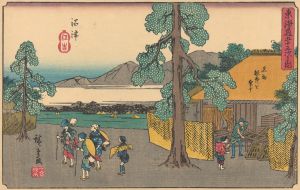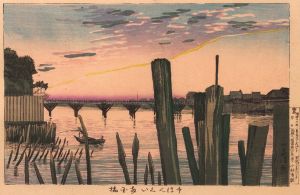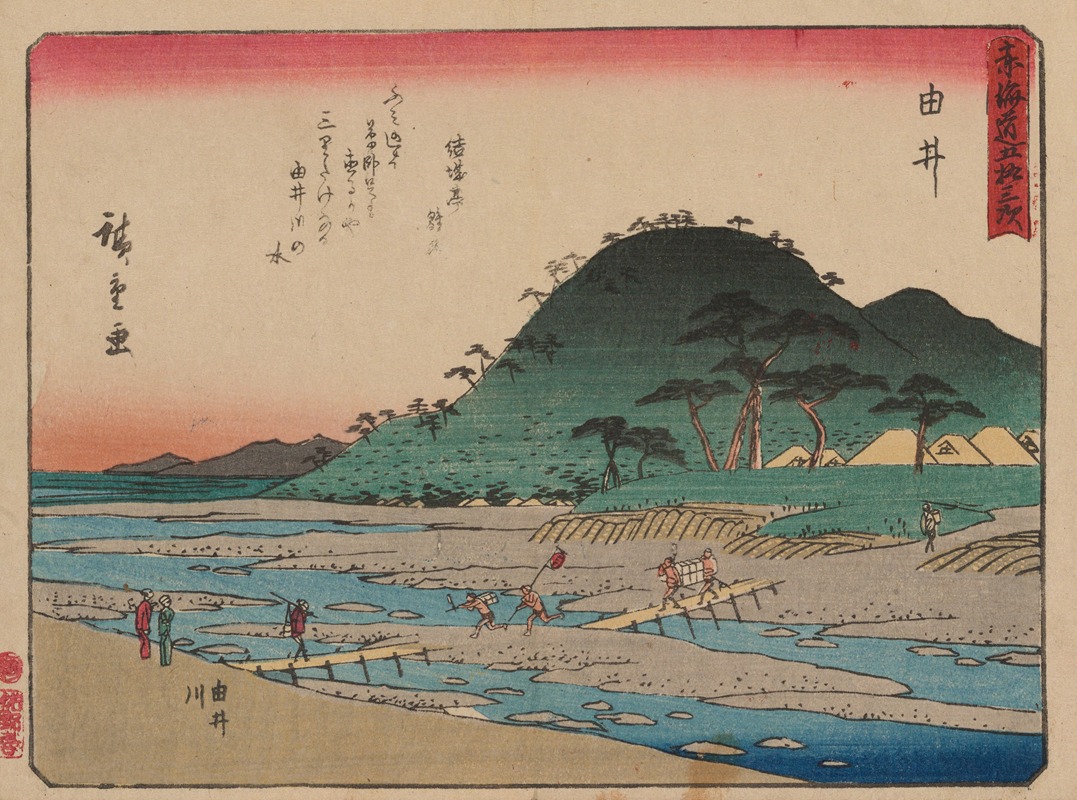
Tokaido gojusantsugi, Pl.17
A hand-painted replica of Andō Hiroshige’s masterpiece Tokaido gojusantsugi, Pl.17, meticulously crafted by professional artists to capture the true essence of the original. Each piece is created with museum-quality canvas and rare mineral pigments, carefully painted by experienced artists with delicate brushstrokes and rich, layered colors to perfectly recreate the texture of the original artwork. Unlike machine-printed reproductions, this hand-painted version brings the painting to life, infused with the artist’s emotions and skill in every stroke. Whether for personal collection or home decoration, it instantly elevates the artistic atmosphere of any space.
Andō Hiroshige, a renowned Japanese ukiyo-e artist of the Edo period, is celebrated for his landscape prints and depictions of everyday life. One of his most famous series is "The Fifty-three Stations of the Tōkaidō" (Tōkaidō Gojūsan-tsugi), which illustrates the scenic journey along the Tōkaidō road, a vital route connecting Edo (modern-day Tokyo) to Kyoto. This series, created after Hiroshige's own travels along the road in the early 1830s, captures the diverse landscapes and cultural life of Japan during this era.
Plate 17 of this series, often referred to as "Yui" (由比), is a notable work within the collection. This print depicts the station of Yui, one of the fifty-three post stations along the Tōkaidō. The scene is renowned for its dramatic portrayal of the natural landscape, showcasing Hiroshige's skill in capturing the essence of a place through his use of color, composition, and perspective.
In this particular print, Hiroshige presents a striking view of the rugged coastline near Yui, with the imposing cliffs of Satta Pass in the background. The composition is dynamic, with the road winding precariously along the cliffs, emphasizing the challenging nature of travel during this period. The sea, depicted with Hiroshige's characteristic use of blue tones, stretches out to the horizon, creating a sense of vastness and movement. The print also features travelers navigating the narrow path, providing a glimpse into the daily life and challenges faced by those journeying along the Tōkaidō.
Hiroshige's use of perspective in this print is particularly noteworthy. The high vantage point offers a sweeping view of the landscape, drawing the viewer's eye from the foreground to the distant horizon. This technique not only enhances the sense of depth but also highlights the dramatic topography of the region. The interplay of light and shadow on the cliffs and water further adds to the print's visual impact, showcasing Hiroshige's mastery of the ukiyo-e style.
The "Yui" print, like others in the Tōkaidō series, reflects the cultural and historical significance of the Tōkaidō road during the Edo period. As a major artery of travel and commerce, the road facilitated the exchange of goods, ideas, and culture between the two major cities of Edo and Kyoto. Hiroshige's work captures this vibrant exchange, offering a window into the past and the rich tapestry of life along the Tōkaidō.
Hiroshige's Tōkaidō series, including Plate 17, had a profound influence on both Japanese and Western art. The series was widely popular in Japan and contributed to the ukiyo-e genre's prominence. In the West, Hiroshige's work, along with that of other ukiyo-e artists, played a significant role in the Japonisme movement, influencing artists such as Vincent van Gogh and Claude Monet.
In summary, Plate 17 of "The Fifty-three Stations of the Tōkaidō" by Andō Hiroshige is a masterful depiction of the Yui station, capturing the dramatic landscape and cultural vibrancy of the Edo period. Through his innovative use of perspective, color, and composition, Hiroshige offers a timeless portrayal of one of Japan's most iconic travel routes.





